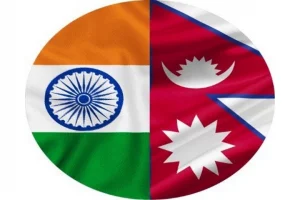India is set to top in remittance inflows again with the country’s migrant workers expected to send home a record USD 100 billion in 2022, according to a World Bank report.
In its latest Migration and Development Brief, World Bank said remittance flows to India will rise 12 per cent, putting the country ahead of China, Mexico and the Philippines.
In 2022, for the first time a single country, India, is on track to receive more than USD 100 billion in yearly remittances,” the World Bank said in a statement.
Remittances to South Asia grew an estimated 3.5 per cent to USD 163 billion in 2022. However, there is a large disparity across countries, from India’s projected 12 per cent gain to Nepal’s 4 per cent increase, to an aggregate decline of 10 per cent for the region’s remaining countries that include Pakistan.
According to World Bank, the easing of flows reflects the discontinuation of special incentives some governments had introduced to attract flows during the pandemic, as well as preferences for informal channels offering better exchange rates.
Remittances to India were enhanced by wage hikes and a strong labour market in the United States and other Organisation for Economic Co-operation and Development (OECD) countries, it adds.
In the Gulf Cooperation Council destination countries, governments ensured low inflation through direct support measures that protected migrants’ ability to remit. Sending USD 200 to the region cost 4.1 per cent on average in the second quarter of 2022, down from 4.3 per cent a year ago.
“Growth in remittance flows is estimated at 9.3 per cent for Latin America and the Caribbean, 3.5 per cent in South Asia, 2.5 per cent in the Middle East and North Africa, and 0.7 per cent in East Asia and the Pacific.
Remittances to low- and middle-income countries (LMICs) withstood global headwinds in 2022, growing an estimated 5 per cent to USD 626 billion. This is sharply lower than the 10.2 per cent increase in 2021, according to the latest World Bank Migration and Development Brief.
Remittances are a vital source of household income for LMICs. They alleviate poverty, improve nutritional outcomes, and are associated with increased birth weight and higher school enrolment rates for children in disadvantaged households.
According to the World Bank, studies show that remittances help recipient households to build resilience, for example through financing better housing and to cope with the losses in the aftermath of disasters.
Remittance flows to developing regions were shaped by several factors in 2022. A reopening of host economies as the COVID-19 pandemic receded supported migrants’ employment and their ability to continue helping their families back home.
The World Bank brief said rising prices on the other hand, adversely affected migrants’ real incomes. Also influencing the value of remittances is the appreciation of the ruble, which translated into higher value, in U.S. dollar terms, of outward remittances from Russia to Central Asia.
“Migrants help to ease tight labor markets in host countries while supporting their families through remittances. Inclusive social protection policies have helped workers weather the income and employment uncertainties created by the COVID-19 pandemic. Such policies have global impacts through remittances and must be continued,” said Michal Rutkowski, World Bank Global Director for Social Protection and Jobs.
In a special feature on climate-driven migration, the Brief notes that rising pressures from climate change will both drive increases in migration within countries and impair livelihoods. The poorest are likely to be most affected as they often lack the resources necessary to adapt or move.




















